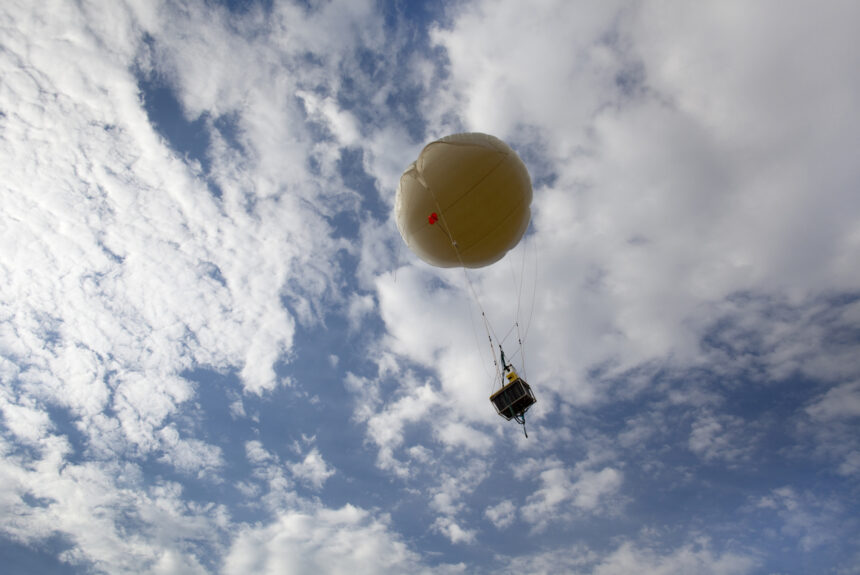As climate change accelerates the likelihood of more extreme weather events, several startups are developing new forecasting technologies that can deliver more accurate, up-to-date weather prognoses. Many of these emerging companies are harnessing the capabilities of artificial intelligence (AI) to disrupt traditional models.
One newcomer in the industry is California-rooted WindBorne Systems, an AI-powered weather balloon startup co-founded by Stanford alumni and former SpaceX engineers John Dean, Dr. Andrey Sushko, and Kai Marshland. Founded in 2019, WindBorne is revolutionizing the collection and reporting of climate data using high-altitude, sensor-equipped balloons. These “smart balloons” can fly for weeks at a time, collecting valuable information from anywhere in the world. And while weather balloons are not new, WindBorne’s collect 40 to 50 times as much data as their conventional counterparts. They are also lighter and more sustainable.
>>>READ: This Startup Could Make the World’s Most Popular Crop Greener
“Traditional weather balloons, including those most commonly used around the world today, are limited to flying and collecting atmospheric data solely above their point of launch; these single-use balloons can fly just for a few hours before popping and coming back down,” the company wrote in a blog post. WindBorne’s proprietary self-flying system, on the other hand, can gather high-quality data from difficult-to-navigate places like the ocean––a critical feat considering that 85% of the atmosphere remains unaccounted for, according to the World Meteorological Organization.
“We operate the most comprehensive balloon constellation on the planet,” CEO of WindBorne Systems John Dean told CNBC.
The balloons are also inexpensive, having rapidly declined in cost since 2019. WindBorne claims its approach offers up to 150 times more data per dollar than traditional methods.
To boost forecast accuracy, WindBorne’s system integrates deep learning and generative AI. Specifically, WindBorne uses WeatherMesh, an advanced deep-learning numerical weather prediction model, to develop real-time, medium-range global weather outlooks. In contrast to standard computer-based weather forecasts that rely on physics models and complex mathematical equations to simulate atmospheric conditions, WindBorne’s novel AI sifts through vast amounts of data quickly and efficiently to identify patterns that may otherwise have been missed by the human eye. Once sufficiently trained, these deep learning models can learn directly from real-time data and make predictions.
>>>READ: Bacterial Batteries Promise a New Era of Data-Driven Agriculture
The company claims its model is 11 percent more precise than Google DeepMind’s AI weather model, GraphCast, the current front-runner in AI weather prediction. The model is also more reliable than the European Centre for Medium-Range Weather Forecast’s medium-range model, ENS, which is heralded as the “gold standard” for classic physics-based weather models. According to WindBorne, WeatherMesh surpassed ENS by a 6 to 14 percent margin for five-day forecasts.
In May, the startup closed a $15 million funding round led by lead investor Khosla Ventures. Funds from the Series A round will be used to scale its technology and enhance its autonomous flight software.
Since its founding five years ago, WindBorne has executed over 1,000 unmanned flights. The company plans to boost its fleet of balloons one hundred-fold in the near future, bringing the total to 10,000.
As weather prediction takes on a new level of urgency, investors are increasingly interested in startups that can help mitigate the effects of severe weather events brought on by climate change. Companies like WindBorne Systems are giving traditional weather forecasting methods a run for their money.
Nathalie Voit is a freelance content creator and a graduate of the University of Florida. She is an alumni of The Heritage Foundation’s Young Leaders Program.
The views and opinions expressed are those of the author’s and do not necessarily reflect the official policy or position of C3.
